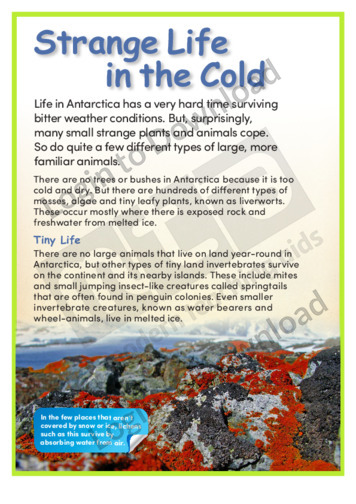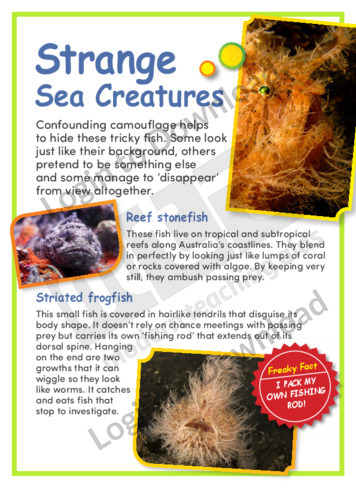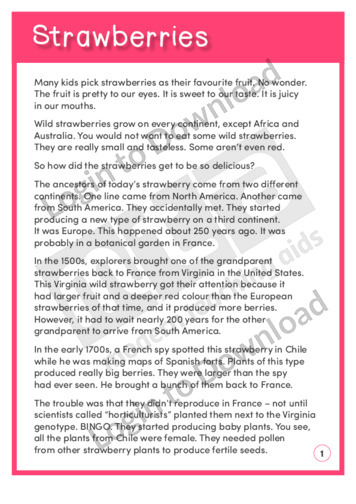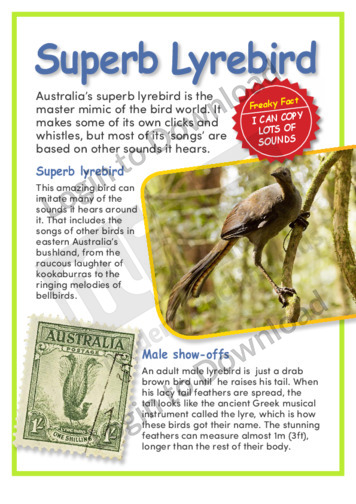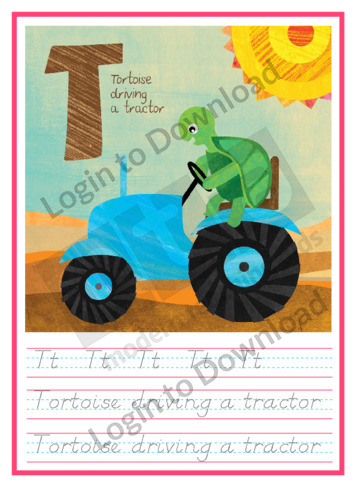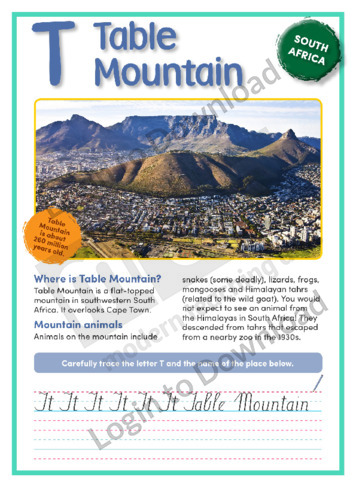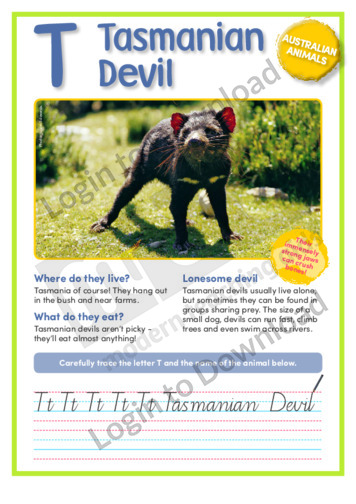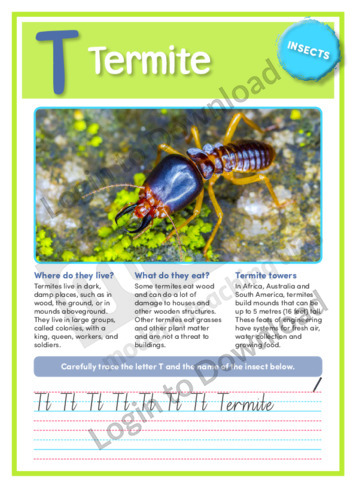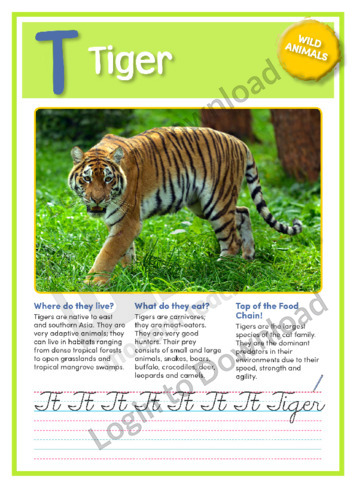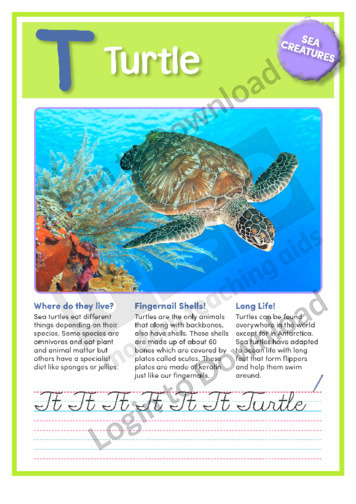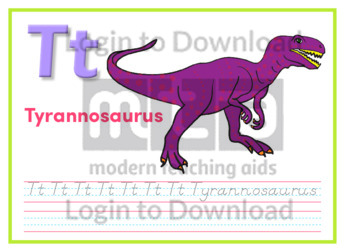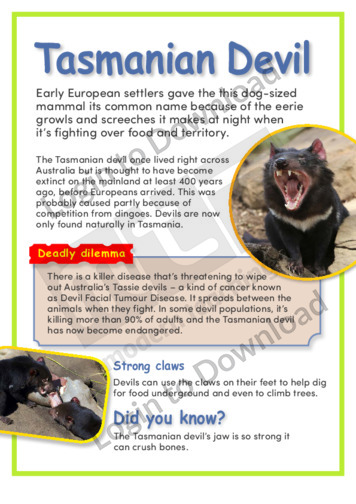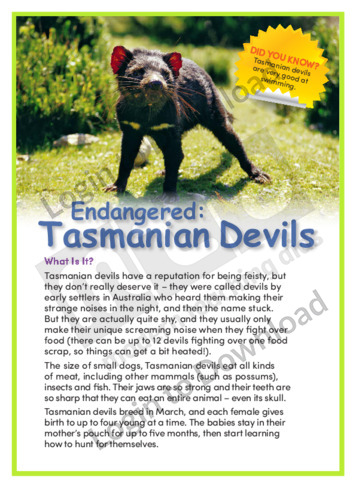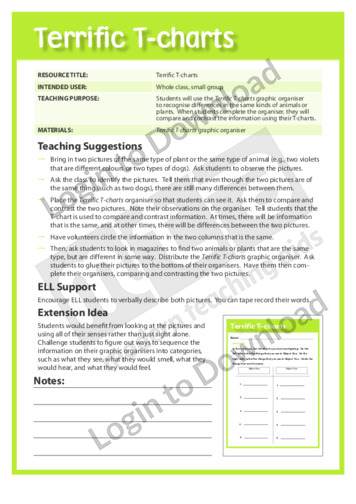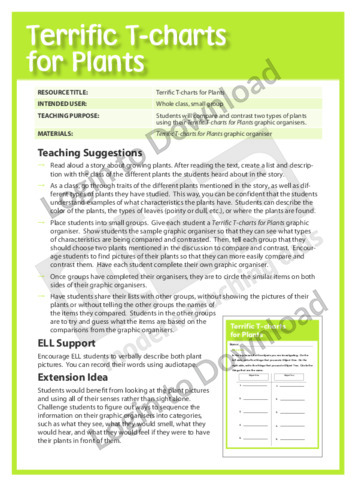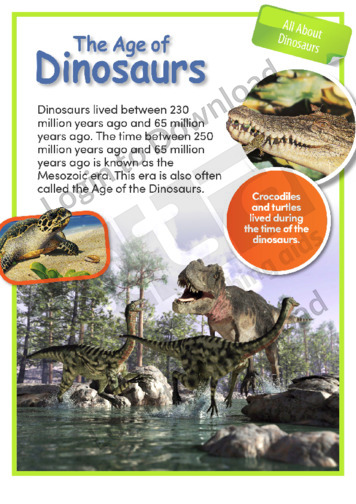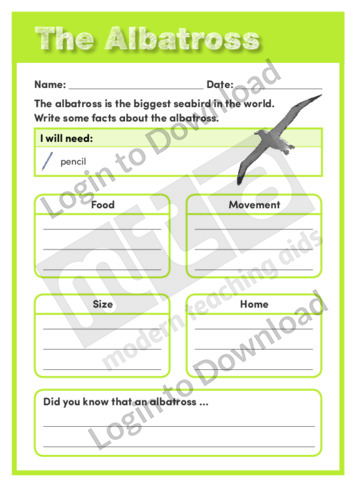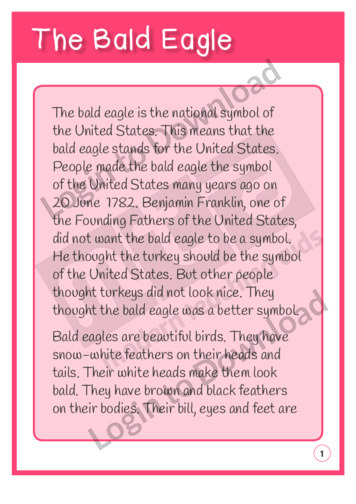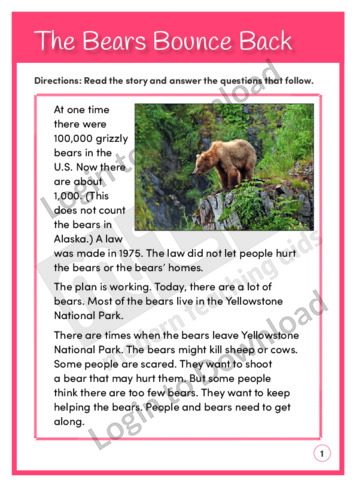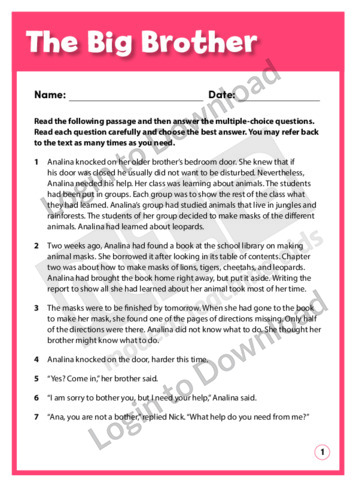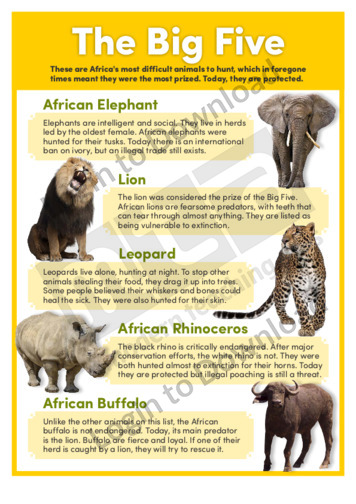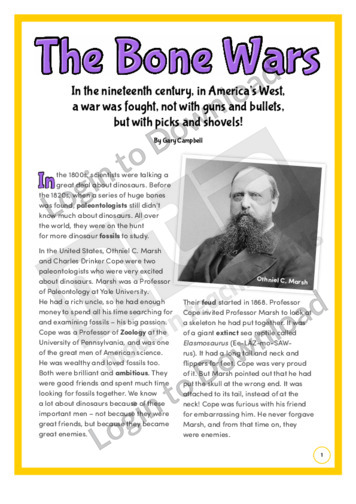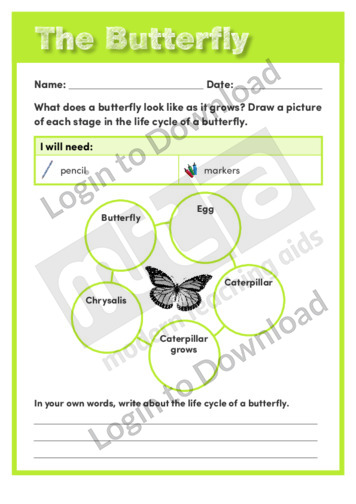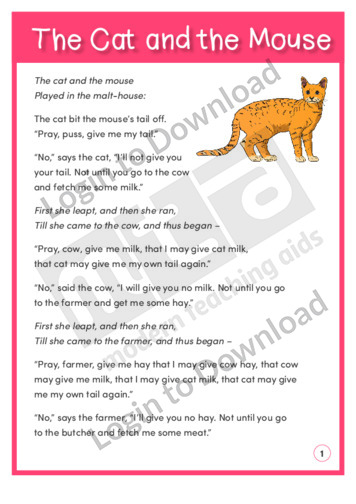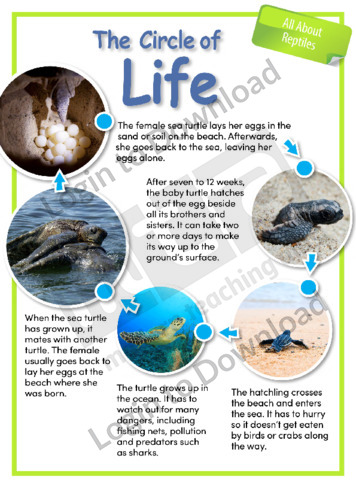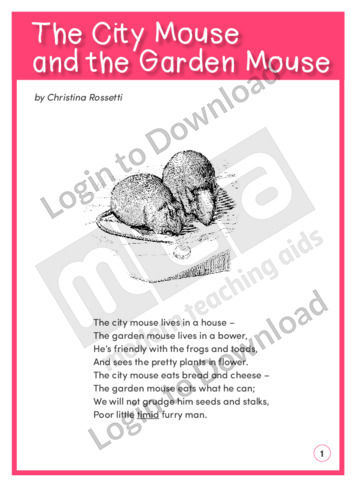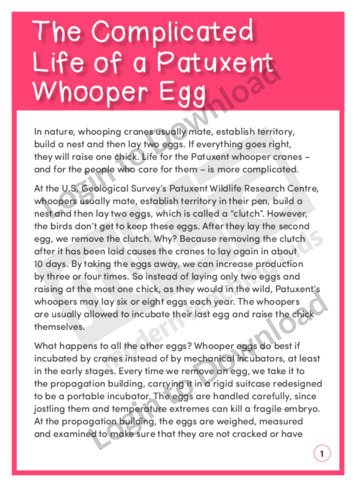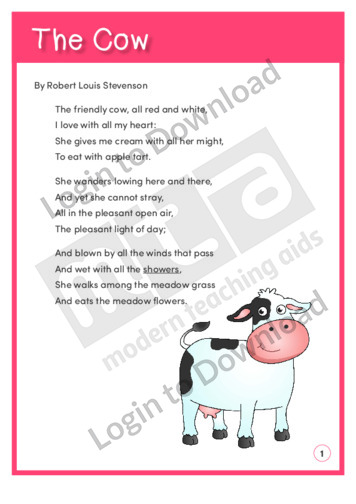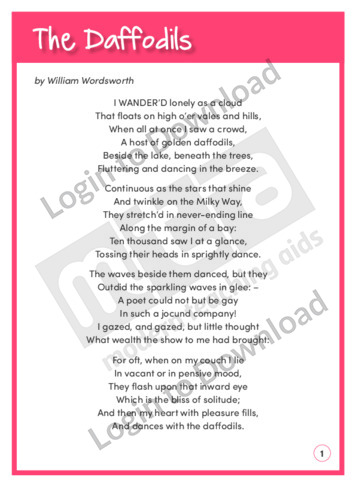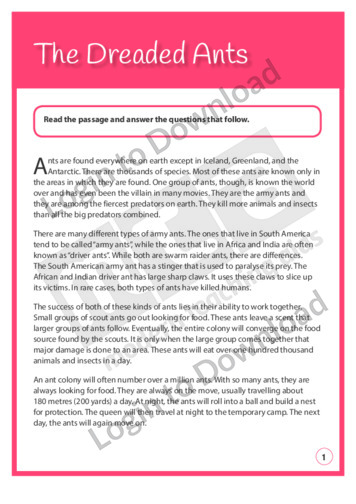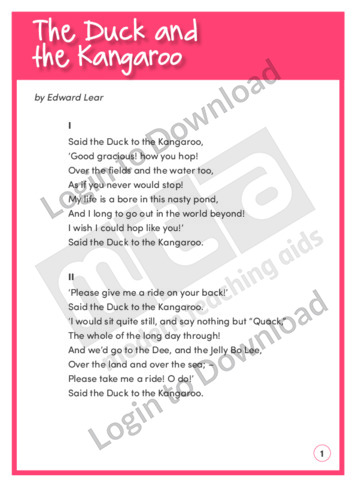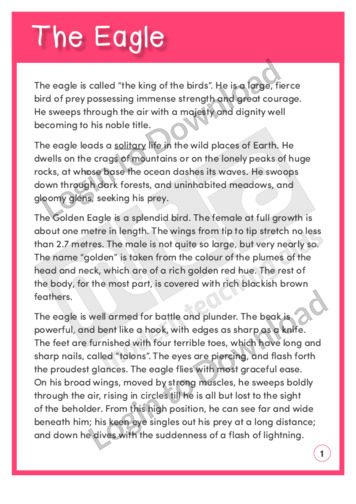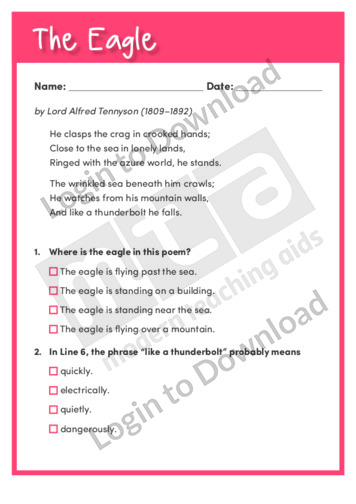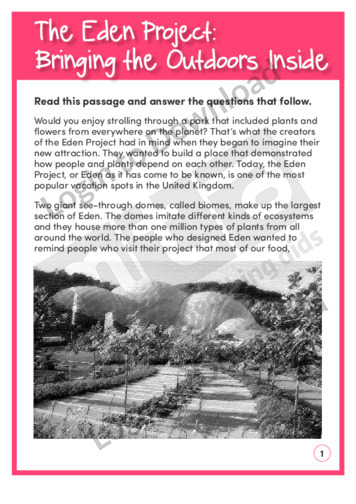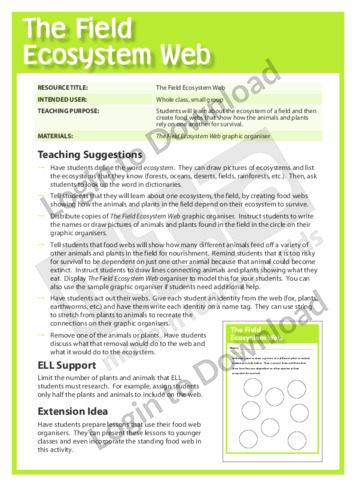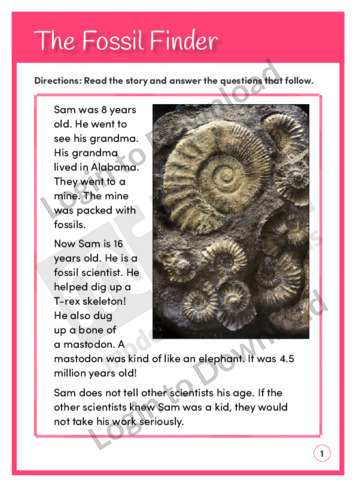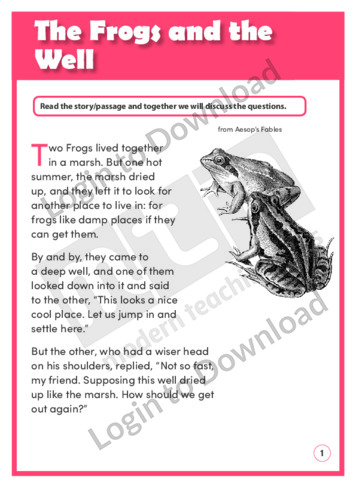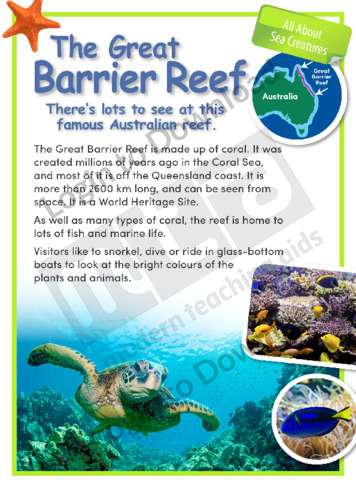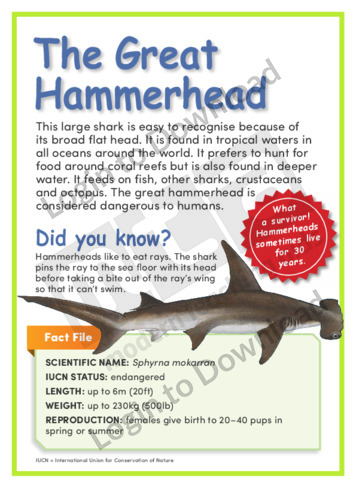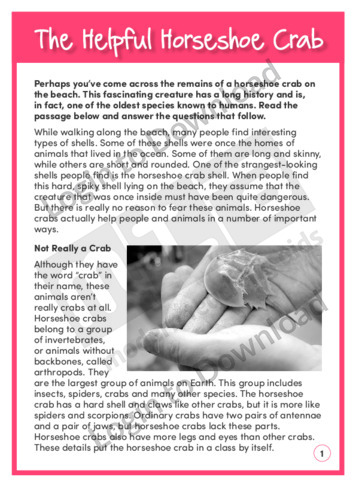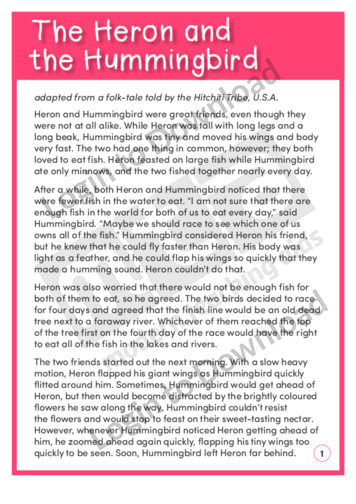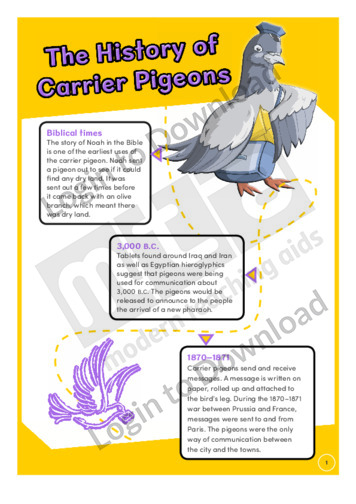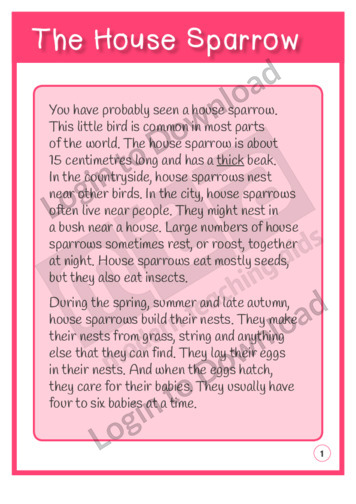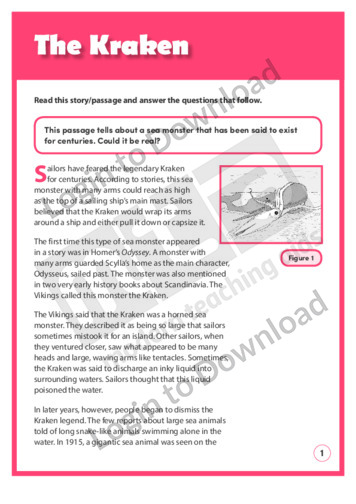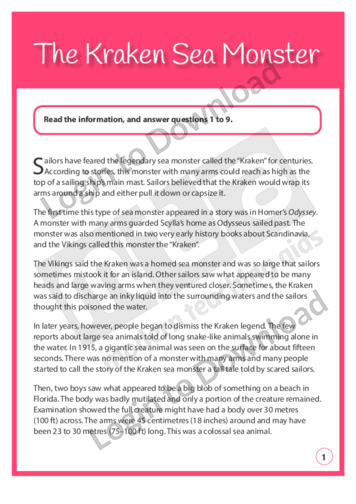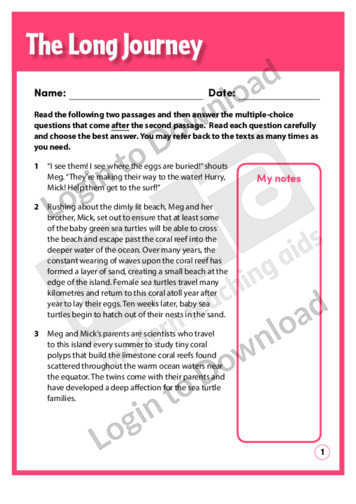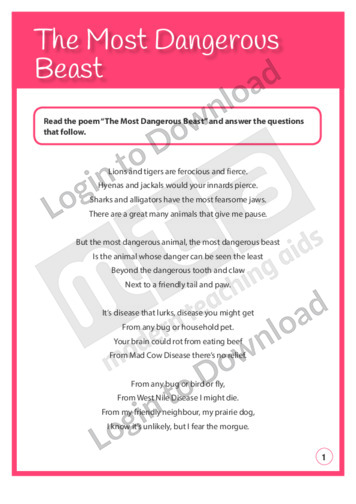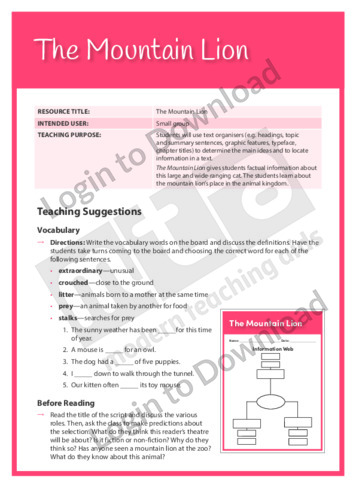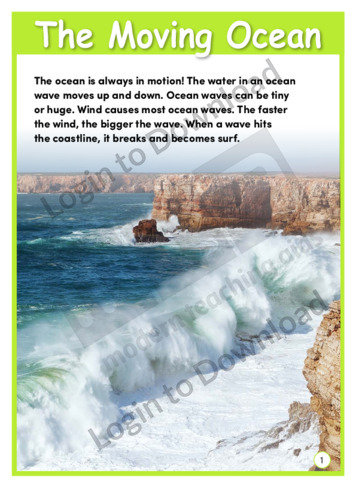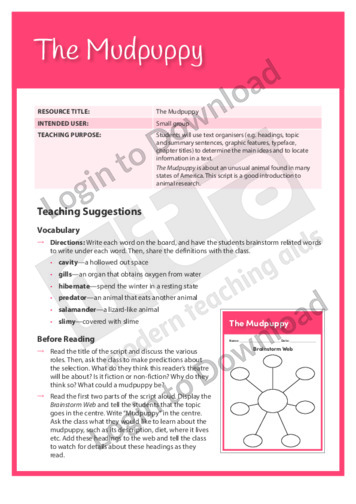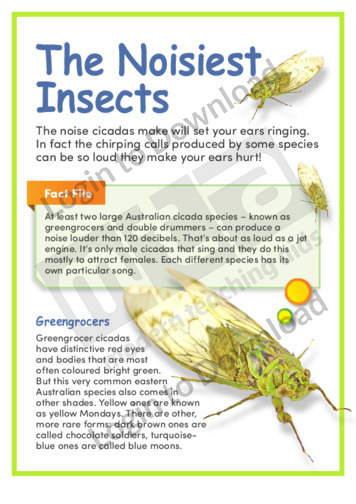This article, ‘Antarctica: Strange Life in the Cold’, profiles some of the plants and animals that live in Antarctica. It provides factual information about life on Antarctica and includes colourful and engaging photographs.
This article, ‘Strange Sea Creatures’ provides information about four species of marine creatures including their physical characteristics, habits, habitat, camouflage ability and hunting methods. It also introduces students to various terms relating to the creatures’ physical features. The text is supported by colourful and engaging photographs.
This reading comprehension activity, ‘Strawberries’ asks students to answer questions about the origins of strawberries. It is aimed at increasing students’ awareness of semantics and encourages students to recall information, make comparisons and form opinions.
This article, ‘Superb Lyrebird’ provides information about the physical characteristics, habits, habitat and special abilities of the superb lyrebird. It also introduces students to various terms relating to the lyrebird’s physical features and habits. The text is supported by colourful and engaging photographs.
This ‘Animal Alphabet: T: Tortoise’ is an animal themed worksheet that provides opportunities for handwriting practice.
This short nonfiction text ‘T: Table Mountain’ features important factual background information relating to the flat-topped mountain that overlooks Cape Town. It is aimed at broadening students’ awareness of the unique and beautiful natural landmarks of South Africa and also features an activity for students to practise their handwriting.
This short nonfiction text, ‘T: Tasmanian Devil’ provides factual information about the Australian animal the Tasmanian Devil.
This short nonfiction text, ‘T: Termite’ provides factual information about the Termite, exploring where they live, what they eat and other interesting facts. The resource also provides a photo of the insect and guided handwriting practice that can be used to supplement the informational text.
This short nonfiction text, ‘T: Tiger’ provides factual information about the Tiger, exploring where they live, what they eat and other interesting facts.
This short nonfiction text, ‘T: Toucan’ provides factual information about the Toucan, exploring where they live, what they eat and other interesting facts.
This short nonfiction text, ‘T: Turtle’ provides factual information about the Turtle, exploring where they live, what they eat and other interesting facts.
This Animal Alphabet, ‘T: Tyrannosaurus’ is a Dinosaur themed worksheet that provides opportunities for handwriting practice.
This article, ‘Tasmanian Devil’ provides information about the physical characteristics, habits, habitat and diet of the Tasmanian devil. It also introduces students to various terms relating to the echidna’s physical features. The text is supported by colourful and engaging photographs.
This article, ‘Endangered: Tasmanian Devils’, provides information about Tasmanian devils. It is aimed at broadening students’ environmental awareness and includes colourful and engaging images.
This graphic organiser, ‘Terrific T-Charts’ allows students to recognise differences in the same kind of animals or plants and compare and contrast the information.
This graphic organiser, ‘Terrific T-Charts for Plants’ allows students to recognise differences in two types of plans then compare and contrast the information.
This article, ‘All About Dinosaurs: The Age of Dinosaurs’, provides information about the time when dinosaurs were alive. It is aimed at broadening students’ awareness of natural history and includes colourful and engaging images.
This Readers Theatre activity, ‘The Alaskan Wilderness’ encourages students to summarise and paraphrase information given in the text. It also builds reading fluency. This activity includes a script for 7 readers.
This life science worksheet, ‘The Albatross’ supports students to write facts about these huge birds. It supports an understanding of animals.
This article, ‘All About Animal Homes: The Australian Bush’, describes different animals that live in the Australian bush. It provides factual information about these animals and includes colourful and engaging photographs.
This article, ‘The Australian Honeybee’, provides information about the behaviour, habitat and life cycle of the honeybee. It focuses on the bee’s close association with its habitat. The text is supported by several illustrations.
This reading comprehension activity, ‘The Bald Eagle’ asks students to answer questions about the bald eagle, the national symbol of the United States. It is aimed at increasing students’ awareness of semantics and encourages students to recall information, form opinions and think about word meanings and word families.
This reading comprehension activity, ‘The Bear Facts’ asks students to answer questions about wild bears. It is aimed at increasing students’ awareness of semantics and encourages them to recall information and think about word meaning.
This reading comprehension activity, ‘The Bears Bounce Back’, asks students to answer comprehension questions on a text about grizzly bears in America.
This article, ‘Getting to Know Sharks: The Big Bite’, provides information about sharks. Shark experts Valerie and Ron Taylor share their knowledge of these dangerous predators as well as real-life stories about diving with sharks.
In this story, ‘The Big Brother’, problem is solved when Analina’s brother finds instructions on his computer. It provides opportunities for students to practise vocabulary and comprehension skills. Answer sheet provided with file download.
This history article ‘The Big Five’ features important factual background information about the five African animals most prized by hunters, and now by safari tourists. It identifies the lion, African elephant, leopard, rhinoceros and African buffalo as the Big Five, and discusses the threats each animal faces today. It is aimed at broadening students’ historical …More
In the story, ‘The Bird Feeder’ readers learn how Dad helps Pat solve a garden problem by helping her build a bird feeder. It includes a procedure and provides opportunities for students to practise vocabulary and comprehension skills. Answer sheet provided with file download.
This history article, ‘The Bone Wars’ features the two American paleontologists Othniel C. Marsh and Charles Drinker Cope. It provides factual information about the intense rivalry between these two scientists, and is aimed at broadening students’ cultural and historical awareness.
This life science worksheet, ‘The Butterfly’ supports students to explore the life cycle of a butterfly. It supports an understanding of life cycles.
This reading comprehension activity, ‘The Cat and the Mouse’ asks students to answer questions about this famous fairy tale. It is aimed at increasing students’ awareness of semantics and encourages students to recall information and draw conclusions.
This article, ‘All About Reptiles: The Circle of Life’, describes the different stages of a sea turtle’s life. It provides factual information about each stage and includes colourful and engaging photographs.
This reading comprehension activity, ‘The City Mouse and the Garden Mouse’ asks students to answer questions about Christina Rossetti’s poem featuring a city mouse and a country mouse. It is aimed at increasing students’ awareness of semantics and encourages students to recall information, draw conclusions, form opinions and think about word meanings.
This reading comprehension activity, ‘The Complicated Life of a Patuxent Whooper Egg’ asks students to answer questions about Patuxent whooper cranes and their eggs. It is aimed at increasing students’ awareness of semantics and encourages students to recall information, draw conclusions and think about author purpose.
This reading comprehension activity, ‘The Cow’ asks students to answer questions about Robert Louis Stevenson’s poem called ‘The Cow’. It is aimed at increasing students’ awareness of semantics and encourages them to recall information and think about word meaning.
This reading comprehension activity, ‘Daffodils’ asks students to answer questions about William Wordsworth’s poem about daffodils. It is aimed at increasing students’ awareness of semantics and encourages students to recall information and draw conclusions.
This article, ‘Dragonflies and Damselflies: The Dragon and the Damsel’, provides information about dragonflies and damselflies. It profiles different species of dragonfly and damselfly and includes colourful and engaging illustrations.
This analysing text worksheet ‘The Dreaded Ant’ supports students to use various strategies to understand a narrative text about army and driver ants. It is aimed at encouraging students to deconstruct the text in order to gain a deeper understanding of its purpose, to recall specific details from the text, to look critically at words …More
This Reading Comprehension worksheet, ‘The Dreaded Ants’, features an informational text about the swarm raider ants known as army or driver ants. It encourages students to use a variety of strategies to interpret the text and includes questions about the main idea, detail, comparison/contrast, cause and effect, vocabulary, sequence, reasoning, fact/opinion, genre, and making a …More
This reading comprehension activity, ‘The Duck and the Kangaroo’ asks students to answer questions about a famous poem by Edward Lear. It is aimed at increasing students’ awareness of semantics and encourages students to recall information and draw conclusions.
This reading comprehension activity, ‘The Eagle’ asks students to answer questions about the mighty eagle. It is aimed at increasing students’ awareness of semantics and encourages students to recall information and think about word meanings.
This reading comprehension activity, ‘The Eagle’ asks students to answer questions about a poem about an eagle. It is aimed at increasing students’ awareness of semantics and encourages students to recall information and think about word meanings.
This reading comprehension activity, ‘The Eden Project: Bringing the Outdoors Inside’ asks students to answer comprehension questions about the Eden Project. It is aimed at developing students’ awareness of semantics and encourages them to draw conclusions, form opinions and make predictions and comparisons.
This graphic organiser, ‘The Field Ecosystem Web’ helps students to learn about the ecosystem of a field and then create food webs that so how the animals and plants rely on one another for survival.
This reading comprehension activity, ‘The Fossil Finder’, is available at three different reading levels to allow for differentiated instruction. It asks students to read a story and answer comprehension questions about a palaeontologist.
This text elements exemplar ‘The Frogs and the Well’ shows students how to identify the story’s central idea and supporting details. It is aimed at introducing students to the principles of deconstructing texts in order to gain a deeper understanding of their purpose.
This article, ‘All About Sea Creatures: The Great Barrier Reef’, describes the Great Barrier Reef in Australia. It provides factual information and features colourful and engaging photographs.
This article, ‘The Great Hammerhead’, provides information about the physical characteristics, behaviour, habitat, diet and life cycle of this shark. A quick reference fact file includes scientific name and IUCN status. The text is accompanied by a large illustration of the shark.
This reading comprehension activity, ‘The Helpful Horseshoe Crab’ asks students to answer comprehension questions about horseshoe crabs. It is aimed at developing students’ awareness of semantics and encourages them to recall information and the central idea.
This reading comprehension exemplar, ‘The Heron and the Hummingbird’ provides a model of a completed reading comprehension worksheet. It is aimed at increasing students’ awareness of semantics and encourages students to recall information and think about word meanings.
This reading comprehension activity, ‘The House Sparrow’ asks students to answer questions about the common house sparrow. It is aimed at increasing students’ awareness of semantics and encourages them to recall information and think about word meaning.
This analysing text worksheet ‘The Kraken’ supports students to use various strategies to understand a narrative text about these mythical creatures. It is aimed at encouraging students to deconstruct the text in order to gain a deeper understanding of its purpose, to recall specific details from the text, to look critically at words in order …More
This Reading Comprehension worksheet, ‘The Kraken Sea Monster’, features an informational text about a legendary sea creature and the colossal squid. It encourages students to use a variety of strategies to interpret the text and includes questions about comparison/contrast, reasoning, detail, cause and effect, drawing a conclusion, and presentation. Answer sheet provided with file download.
In these paired texts, ‘The Long Journey’ and ‘Coral Reefs’ readers learn about baby sea turtles and the coral reefs that are part of their habitat. They provide opportunities for students to practise vocabulary and comprehension skills. Answer sheet provided with file download.
This Poetry worksheet, ‘The Most Dangerous Beast’, features a light-hearted poem about diseases spread by animals, such as Mad Cow Disease, West Nile Disease, Monkeypox, and Lyme Disease. It encourages students to use a variety of strategies to interpret the poem and includes questions about interpretive language, author’s purpose, drawing a conclusion, and making a …More
This Readers Theatre activity, ‘The Mountain Lion’ encourages students to use text organisers to determine the main ideas and to locate information in a text. It also builds reading fluency. This activity includes a script for 5 readers.
This science article, ‘The Moving Ocean’ features why and how the ocean is always in motion! It provides factual information about ocean currents and waves. It is aimed at broadening students’ scientific and geographical awareness in an engaging manner.
This Readers Theatre activity, ‘The Mudpuppy’ encourages students to use text organisers to determine the main ideas and to locate information in a text. It also builds reading fluency. This activity includes a script for 5 readers.
This article, ‘The Noisiest Insects’ provides information about the physical characteristics, habits, habitat, life cycle, prey and special abilities of several species of cicada. It also introduces students to various terms relating to the cicadas’ physical features and life cycle. The text is supported by colourful and engaging photographs.
It�s that easy!

